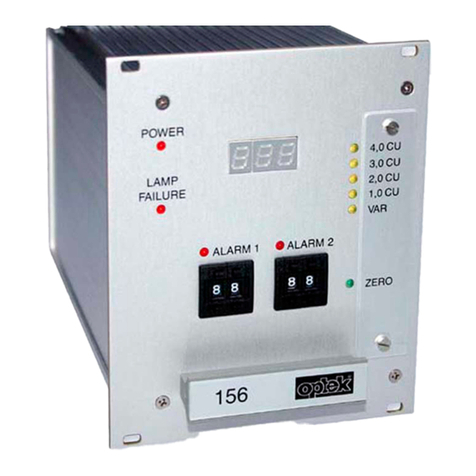
Table of contents
- II -
optek-Manual--1004-1010-02--ProfibusPA-US-2017-06-23
www.optek.com
7 Specifications ........................................................................................................................26
7.1 Physical Block....................................................................................................................27
7.2 Analyzer TB for measuring results M01–M04.....................................................................31
7.3 AI FB for measuring results M01–M04...............................................................................32
7.4 Relay TB............................................................................................................................33
7.5 DI FB relay 1 to 4...............................................................................................................34
7.6 AO TB................................................................................................................................35
7.7 AO FB for mA-In1 and mA-In2 ...........................................................................................36
7.8 Status TB...........................................................................................................................38
7.9 Device Spec. Data structures.............................................................................................41
7.10 Diagnosis...........................................................................................................................42
7.11 Condensed status..............................................................................................................44
7.12 Number display format.......................................................................................................45
8 Software ..................................................................................................................................46
8.1 GSD file .............................................................................................................................46
8.2 EDD file .............................................................................................................................46
8.3 FDT / DTM technology.......................................................................................................46
9 Appendix ................................................................................................................................47
9.1 Addressing of the optek PROFIBUS® PA interface............................................................48
9.1.1 Addressing of the optek PROFIBUS® PA interface with communication
processor CP5512 ...................................................................................................50
9.1.2 Addressing of the optek PROFIBUS® PA interface with interface card
"Softing PROFlusb" .................................................................................................52
9.2 PROFIBUS® PA certificate ................................................................................................56
9.3 DTM certificate...................................................................................................................57
10 EU declaration of conformity ................................................................................................59
11 Contacts .................................................................................................................................60





























